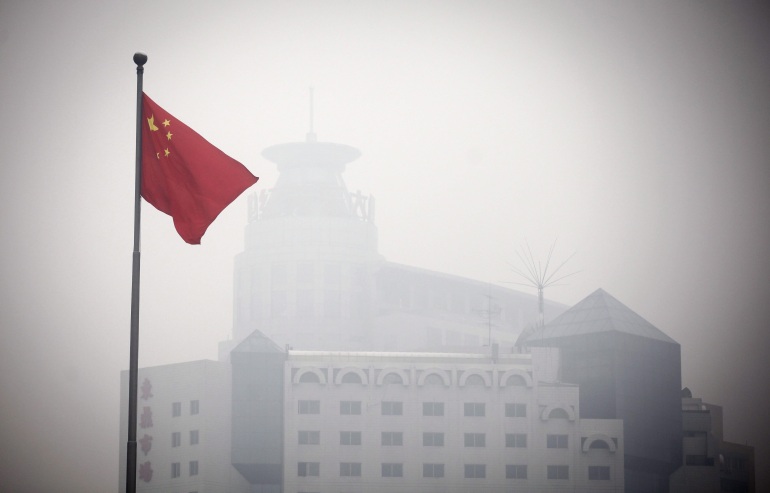How China can cash in on climate change action

The Chinese national flag flames in front of a building barely visible due to heavy smog in Beijing, China, 02 December 2011. Photo EPA/DIEGO AZUBEL.
Between now and 2020, China needs an average of two trillion yuan ($A380 billion) a year to address climate change related challenges in the country, according to recent research from China's Central University of Finance and Economics.
At the peak of financial demand in 2020, China would require 2.75 trillion yuan to finance its emission reduction and renewable energy targets. At the moment, the funds available to combat climate change are estimated at only 526 billion yuan a year.
There is a large gap between what is needed and what is available. How to address this challenge will be a huge test for Chinese policymakers and financiers, especially at a time when the country is transitioning from a high-growth economy to more sustainable pace of demand.
One of the many ideas that have been put forward is an inter-generational climate change bond, similar to bonds issued during war time.
Tang Min, deputy president of the China Development and Research Foundation (a think tank affiliated with the Chinese Cabinet), compares the challenge of raising funds to address climate change to that of financing a four-decade long war.
During war time, governments around the world issue bonds to help them finance the costs of fighting. Future generations are expected to bear the costs of defending their nations through contributing to the re-payment of bonds.
He argues that the best way to address the financing needs of climate change mitigation is through issuing carbon bonds with 40 years maturity, similar to a war bond. This is a fair way to distribute the burden of financing climate change over several generations.
Tang urges Beijing to issue climate change bonds equivalent to 0.5 per cent of China’s GDP every year until 2050, with yield of 5 per cent. In 2013, the country produced nearly 57 trillion of goods and services; a 0.5 per cent bond issuance means that China could raise nearly 300 billion yuan a year.
Would this bond issuance put an unbearable financial burden on future generations? The answer is no, according to Tang’s calculations.
Assuming China continues to grow at 5 per cent over the next 40 years with annualised inflation of 3 per cent, the total debt liability would actually decline from 0.5 per cent of GDP to only 0.15 per cent over that time period.
Under Tang’s proposal, the new climate change bonds will be backed by the Chinese government and will have the same credit rating as that of the central government. Beijing also needs to ensure that there is a deep and liquid market for climate change bonds.
If the goal of raising 300 billion yuan a year is achieved, Tang argues that the money could be used to offer subsidies, tax breaks and new incentives to invest in renewable energy technology and attract more private sector investment.
If Beijing is committed to 300 billion a year in new climate change funding, it is likely to attract further 1.5 trillion yuan in private sector funding, according to his calculations.
The new investment will go a long way in helping China address the mounting problem of climate change, a challenge for which the country is ill-prepared, as well as worsening environmental problems such as smog pollution in major cities.
Tang is right in saying that addressing climate change is like waging a global war over many decades and we need to make sure that both present and future generations play their own and fair part in contributing to the cost of mitigation.
Issuing inter-generational climate change bonds is one idea from China worth considering.
Follow Peter Cai on Twitter: @peteryuancai
Subscribe to the China Spectator newsletter: http://bit.ly/ChinaSpec
















